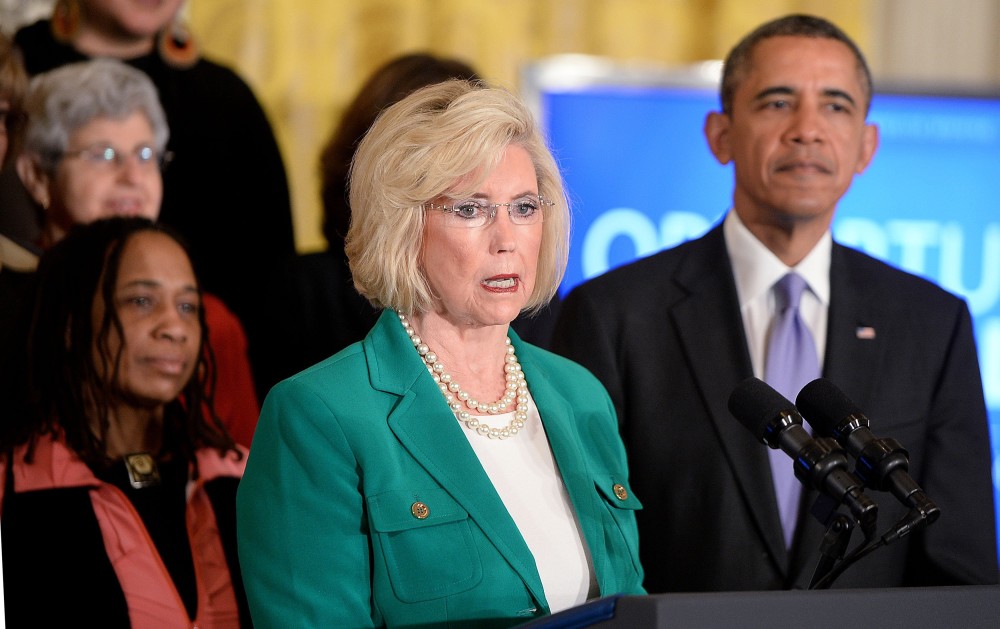By Hugh Bailey
Connecticut Post, Bridgeport.
In Connecticut’s richest towns, women who work full time make half as much as men. Statewide, women who work as physicians earn 56 percent as much as a man in the same job. Only 17 percent of women in Connecticut’s cities have a bachelor’s degree.
Despite broad gains in recent decades for women in the Connecticut labor force, stubborn disparities remain in pay, education and the types of jobs women are likely to work, according to a report from a state agency.
Carolyn Treiss, executive director of the Permanent Commission on the Status of Women, which funded the report, said while there is no way to force pay equity on private companies, shedding light on the situation can help bring change.
“Our job at PCSW is to study these chronic issues and make the government, the public and the business community aware of practices that hurt women and families,” she said in an email. “We provide them with hard data which, we hope, they will consider when forming policies and practices.”
Treiss said the reluctance among many people to discuss their salaries makes change difficult. “If there were more transparency in private enterprise, and the stigma were removed from talking about salaries, it would undoubtedly even the playing field,” she said. “And yet it’s still a common practice in many companies to forbid employees from discussing their salaries.”
The report, The Status of Women in Connecticut’s Workforce, was conducted by Cynthia Hess of the Institute for Women’s Policy Research in Washington, D.C. It tracks progress, and its lack, since a similar report was issued in 1998.
Improvements
By many measures, the state is doing better. Labor force participation, annual salaries and gender-earnings ratios have all improved since the 1990s. About 44 percent of employed women in Connecticut are in professional or managerial positions, a significant increase since 1995, when the rate was 33 percent.
Connecticut also compares favorably with the rest of the nation. Women here are more likely to have a bachelor’s degree, have a lower unemployment rate and a higher annual salary than the rest of the U.S.
But stark differences remain. Despite increased attention at the state and federal levels, women employed full-time in Connecticut earn 78 percent as much as men. It’s an improvement from 71 percent in 1998, but an indication that more work remains, Triess said.
Members of Connecticut’s congressional delegation this year sponsored the Paycheck Fairness Act, aimed at closing loopholes in the Equal Pay Act of 1963, which mandated men and women be paid equally for doing the same work. The 2014 bill did not pass.
On the state level, though, laws like Connecticut’s first-in-the-nation mandatory paid sick leave of 2011 have helped, Treiss said.
“Connecticut was the first state to pass paid sick leave legislation, and it was a battle, to be honest,” she said. “If there is the political will to expand it — for example, by making it available to employees who work in companies with under 50 workers — the PCSW would support it. As far as the dire predictions that paid sick leave would be bad for business, several studies have shown this to be completely untrue.”
The report included some positive news on women-owned businesses, along with indications of the difficulties they can face.
“Between 1997 and 2007, the number and proportion of women-owned businesses in Connecticut increased, from 25.5 percent of businesses to 28.1 percent,” according to the report. But it said Connecticut’s revenue growth from women-owned businesses has been slower than in many other states.
Entrepreneurship
Fran Pastore, CEO of the Women’s Business Development Council in Stamford, said there are a number of changes at the federal level that could make a big difference.
She cited the Women’s Small Business Ownership Act of 2014, co-sponsored by U.S. Sen. Richard Blumenthal, D-Conn., as a necessary step. “It’s about making sure resources currently at the federal level continue to be funded by Congress,” she said.
Access to capital is vital, Pastore said, citing statistics that show less than 4 percent of federal contracts go to women-owned businesses.
Pastore, whose organization also has training sites in Bridgeport, Shelton, Fairfield and Norwalk, said entrepreneurialism can make the difference.
“It’s a logical goal for women because it gives you control over your own destiny, flexibility and the ability to create wealth around a passion that you have,” she said.
While federal help lags, Pastore said state government has been responsive to the needs of women in business.
“It takes a long time to create policies that will be friendly to business, to change the paradigm, but I’m confident we’re on the right path,” she said. “Connecticut is a leader in providing opportunities.”
Pastore said the report on women in the workforce confirmed what many have been seeing.
“It highlights a long-standing issue, that women are a largely untapped driver of the economy,” she said.














































































































































































































































































































































































